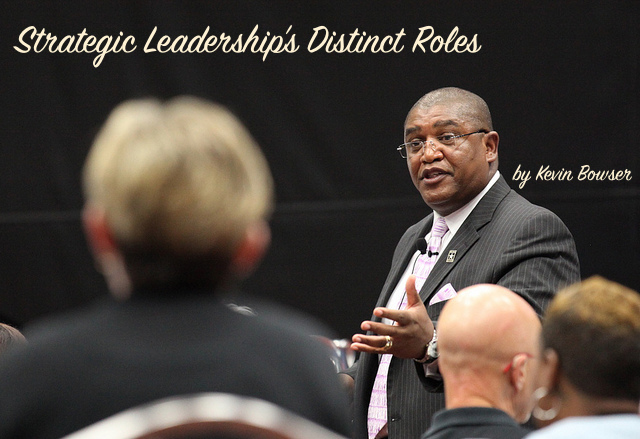I have spent a great deal of time in my last few articles camping out on the subject of strategic leadership. We have examined the ancient roots of it. We have also looked at the circle of leadership.
In this article I want to bring the topic to a close and look at some of the distinctive roles that strategic leaders must fulfill. Consider if you will these seven distinct roles for strategic leaders.
Providing Direction — The word “leadership” derives from an Anglo-Saxon word, laed, which means “road, path, track or the course of a ship at sea.” Leaders provide the directional guidance for their followers. Further, they ensure that everyone is moving the the proper direction. Just moving is not enough. We must be moving in the right direction.
Thinking and Planning — Strategic leaders decide the direction through strategic thinking and planning. They go on to develop the best strategy to guide your processes, and then they implement it. Thinking and planning without an ability to execute is ultimately worthless.
Making It Happen — When a leader executes the plan, good things happen. Strategic plans depend upon leaders who can break it all down into the component and intermediate steps required to be successful. They are involved all along the way and they are monitoring the progress (or lack thereof) along the way.
Relating to the Big Picture — Everyone wants to be a part os something big. Strategic leaders are able to bring smaller groups together under a much larger banner and help them to see that they are part of something real big and really significant. Rallying and unifying are key to relating the little to the big.
Building Relationships — Socrates spoke of the importance of developing allies, which means building valuable partnerships. Every great endeavor requires allies: Great Britain emerged victorious in World War II only with the help of the United States and Russia. But exercise wise judgment when you choose your allies. You may end up in long-term relationships with them.
Releasing the Team Spirit — There is nothing better than feeling that you are part of close-knit “brotherhood.” You alone cannot create a robust esprit de corps within your organization. You can enhance it and you can also damage it.
Strive Daily to Become a Strategic Leader
You develop yourself to lead, and leadership forces you to develop yourself. Leadership requires a fair amount of confidence. Commit to your direction, make your plans, execute your plans, help others relate to the bigger picture, build relationships, and then release the team spirit to carry your momentum.
And then own the consequences. The willingness alone makes others respect you and want to follow your lead.
Strategic leadership is both outer-directed in that it deals with the people you lead and the objectives and tasks that are your responsibility. At the same time, strategic leadership is inner-directed, because dedicated leaders always strive to become better leaders. Fortunately, this is not a complex undertaking. Leadership above all is practical: “You learn it by doing it.” Leadership involves both knowledge and experience. One fans the flame of the other.
Developing Leaders for Today and Tomorrow — Only the best organizations show real and sustained commitment to selecting and developing their business leaders. Leaders know in their hearts that leaders are made, not born. Senior level leaders must develop those who will someday take their place. Don’t assume that you alone are the only true leaders and that everyone else in your organization is just a manager or employee. Give opportunity for every employee to become a leader, and regard yourself as “a leader of leaders.”




Please note: I reserve the right to delete comments that are offensive or off-topic.